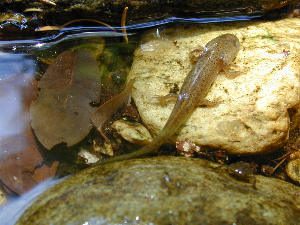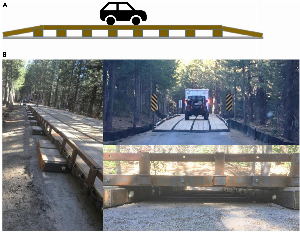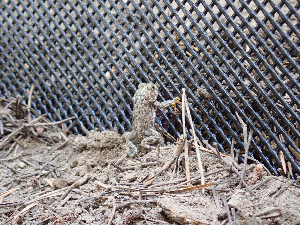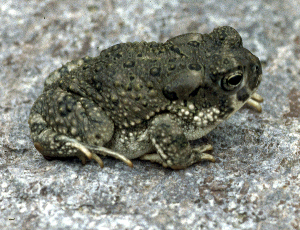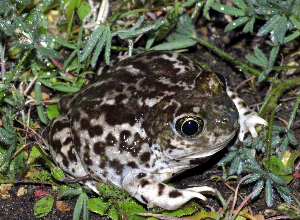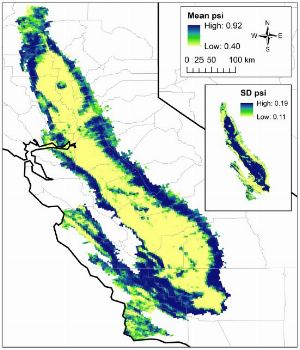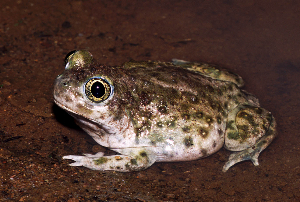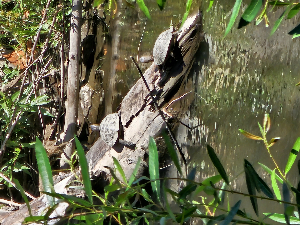Search ARMI Database
Search term(s)
Contribution Number
Search Results
106 record(s) found.
Papers & Reports Assessing amphibian richness, rarity, threats, and conservation prospects for U.S. national park network [UPDATE TITLE]
Data Release Mercury concentrations in amphibian tissues across the United States, 2016-2021
Papers & Reports Native amphibian toxin reduces invasive crayfish feeding with potential benefits to stream biodiversity
Results
We found that the presence of TTX in any form significantly reduced crayfish movement and decreased the amount of food consumed over time. Crayfish responses to the anuran treatment did not significantly differ from controls.
Conclusion
Our laboratory results show that naturally occurring neurotoxin from native California newts limits invasive crayfish foraging and feeding rates, which may play a role in preserving local stream ecosystems by limiting invasive crayfish behaviors that are detrimental to biodiversity.
News & Stories Elevated road segment passage design may provide enhanced connectivity for amphibians, reptiles, and small mammals
Introduction: Designs for safe and effective road crossing structures for small animals are typically under-road microtunnels and culverts which have varying levels of effectiveness reported in the scientific literature. Many species, particularly migratory amphibians, may have limited ability to find and use passages if they are too far apart, resulting in substantial barrier effects.
Methods: We designed a novel open elevated passage (elevated road segment: ERS), similar to a low terrestrial bridge, that could theoretically be built to any length based upon species needs and movement characteristics. A 30 m length prototype ERS was installed along a forest road with a history of amphibian road mortality in Sierra National Forest, Fresno County, CA, USA. From 2018 to 2021, we monitored small animal activity under the ERS in relation to surrounding roadside and forest habitats using active infrared cameras.
Results: We documented a total of 8,815 unique use events, using species specific independence criteria, across 22 species of amphibians (3), reptiles (4), and small mammals (15). Poisson regression modeling of taxonomic group activity under the ERS, roadside and forest, showed that amphibian activity was highest in the forest habitat, no differences were observed for reptiles, and small mammal activity was highest under the ERS. However, mean activity estimates under the ERS were equal to or greater than the open roadside habitat for all 22 species, suggesting that adding cover objects, such as downed logs and vegetation may further enhance passage use.
Discussion: Overall, results showed that the design of the ERS crossing has potential to provide high connectivity for a wide range of amphibian, reptile, and small mammal species while reducing road mortality. ERS systems can also be used in areas with challenging terrain and other hydrological and environmental constraints. Incorporating current road ecology science, we provide supplemental ERS concept designs for secondary roads, primary roads and highways to help increase the options available for road mitigation planning for small animals.
To view the full article click this link: https://doi.org/10.3389/fevo.2023.1145322
This is one of many research studies USGS is conducting to inform safe and effective road crossing systems for amphibians and reptiles. See https://www.usgs.gov/centers/werc/science/reptile-and-amphibian-road-ecology for more information.
Papers & Reports A Dataset of Amphibian Species in U.S. National Parks
Papers & Reports Broad-scale Assessment of Methylmercury in Adult Amphibians
Papers & Reports Prioritizing the risk and management of introduced species in a landscape with high indigenous biodiversity
Papers & Reports Elevated road segment (ERS) passage design may provide enhanced connectivity for amphibians, reptiles, and small mammals
Methods: We designed a novel open elevated passage (elevated road segment: ERS), similar to a low terrestrial bridge, that could theoretically be built to any length based upon species needs and movement characteristics. A 30 m length prototype ERS was installed along a forest road with a history of amphibian road mortality in Sierra National Forest, Fresno County, CA, USA. From 2018 to 2021, we monitored small animal activity under the ERS in relation to surrounding roadside and forest habitats using active infrared cameras.
Results: We documented a total of 8,815 unique use events, using species specific independence criteria, across 22 species of amphibians (3), reptiles (4), and small mammals (15). Poisson regression modeling of taxonomic group activity under the ERS, roadside and forest, showed that amphibian activity was highest in the forest habitat, no differences were observed for reptiles, and small mammal activity was highest under the ERS. However, mean activity estimates under the ERS were equal to or greater than the open roadside habitat for all 22 species, suggesting that adding cover objects, such as downed logs and vegetation may further enhance passage use.
Discussion: Overall, results showed that the design of the ERS crossing has potential to provide high connectivity for a wide range of amphibian, reptile, and small mammal species while reducing road mortality. ERS systems can also be used in areas with challenging terrain and other hydrological and environmental constraints. Incorporating current road ecology science, we provide supplemental ERS concept designs for secondary roads, primary roads and highways to help increase the options available for road mitigation planning for small animals.
Papers & Reports Broad-scale assessment of methylmercury in adult amphibians
Papers & Reports Revisiting conservation units for the endangered mountain yellow-legged frog species complex (Rana muscosa, Rana sierrae) using multiple genomic methods
Papers & Reports Range-wide Persistence of the Endangered Arroyo Toad (Anaxyrus californicus) for 20+ Years Following a Prolonged Drought
agencies and researchers had growing concern for the persistence of the arroyo toad (Anaxyrus californicus), an endangered endemic amphibian in this region. Range-wide surveys for this species had not been conducted for at least 20 years. In 2017–2020, we conducted collaborative surveys for arroyo toads at historical locations. We surveyed 88 of the 115 total sites having historical records and confirmed that the arroyo toad is currently extant in at least 61 of 88 sites and 20 of 25 historically occupied watersheds. We did not detect toads at almost a third of the surveyed sites but did detect toads at 18 of 19 specific sites delineated in the 1999 Recovery Plan to meet one of four downlisting criteria. Arroyo toads are estimated to live 7–8 years, making populations susceptible to prolonged drought. Drought is estimated to increase in frequency and duration with climate change. Mitigation strategies for drought impacts, invasive aquatic species, altered flow regimes, and other anthropogenic effects could be the most beneficial strategies for toad conservation and may also provide simultaneous benefits to several other native species that share the same habitat.
Papers & Reports Defining relevant conservation targets for the endangered Southern California distinct population segment of the mountain yellow-Legged frog (Rana muscosa)
Papers & Reports Projecting the remaining habitat for the western spadefoot (Spea hammondii) in heavily urbanized southern California
the conservation status of imperiled species by projecting where suitable habitat remains and how much is protected from further development. We built SDMs that integrated site occupancy data from systematic pitfall trapping surveys and presence-only data from biodiversity databases and citizen science platforms to project the current distribution of western spadefoots in southern California. Western spadefoot occurrence was positively related to the cover of grassland or shrub/scrub and the % sand in the soil within a 1000 m buffer, and was negatively related to slope, elevation, and distance to ephemeral streams or vernal pools. Most of the remaining unprotected habitat for western spadefoots is in the southern half of its historical range in western San Diego and Riverside counties. A few large tracts of spadefoot habitat exist on U.S. Department of Defense lands and smaller tracts remain on ecological reserves owned by state and local government agencies. Only small patches of habitat remain in the northern half of this clade’s historical range in Ventura, Orange, Los Angeles, and San Bernardino counties. Existing regional conservation plans provide ostensible spatial coverage of the majority of extant habitat for western spadefoots in southern California, but most of the habitat within the jurisdiction of these plans lacks formal protection, exposing this species to further declines as urbanization continues in the 21st century.

